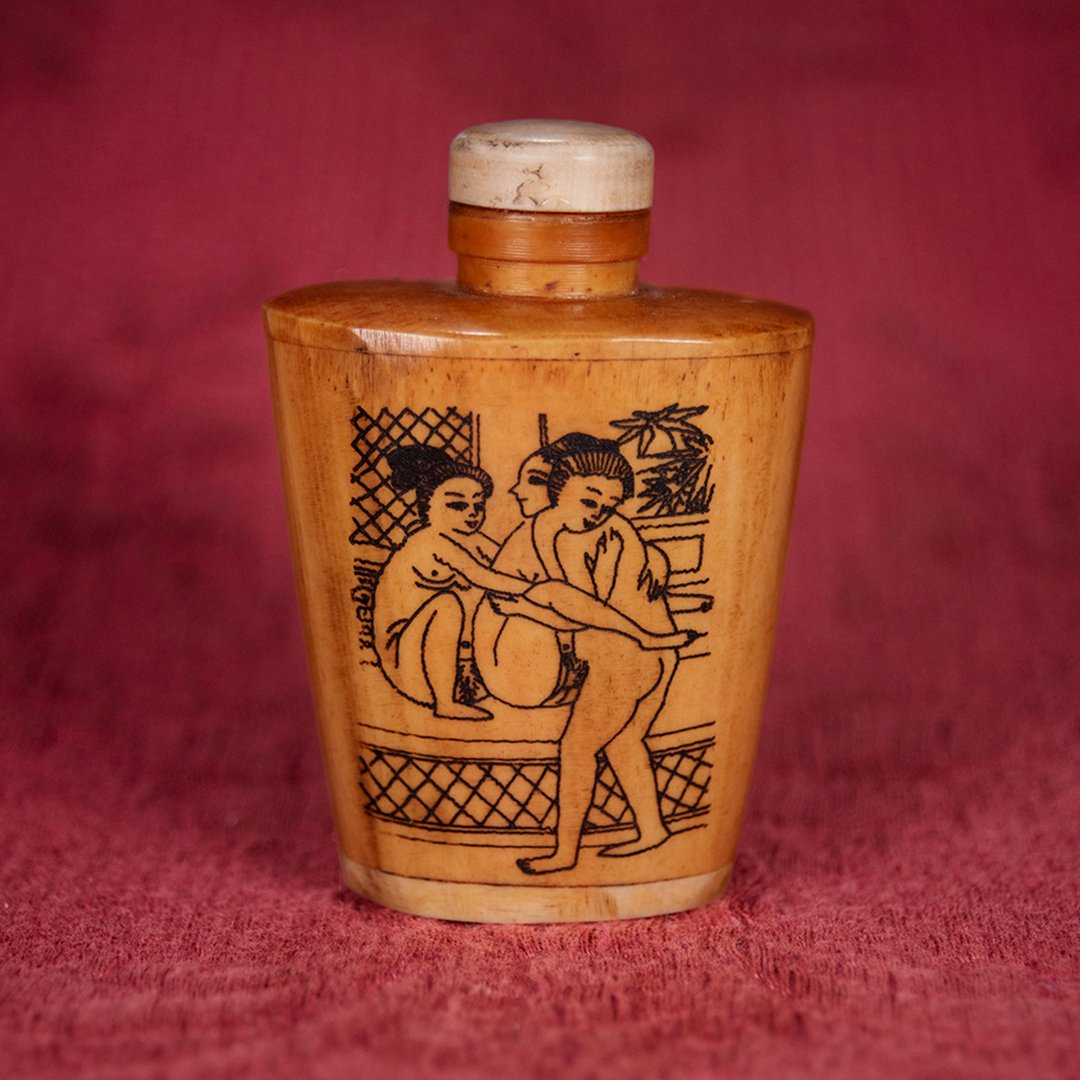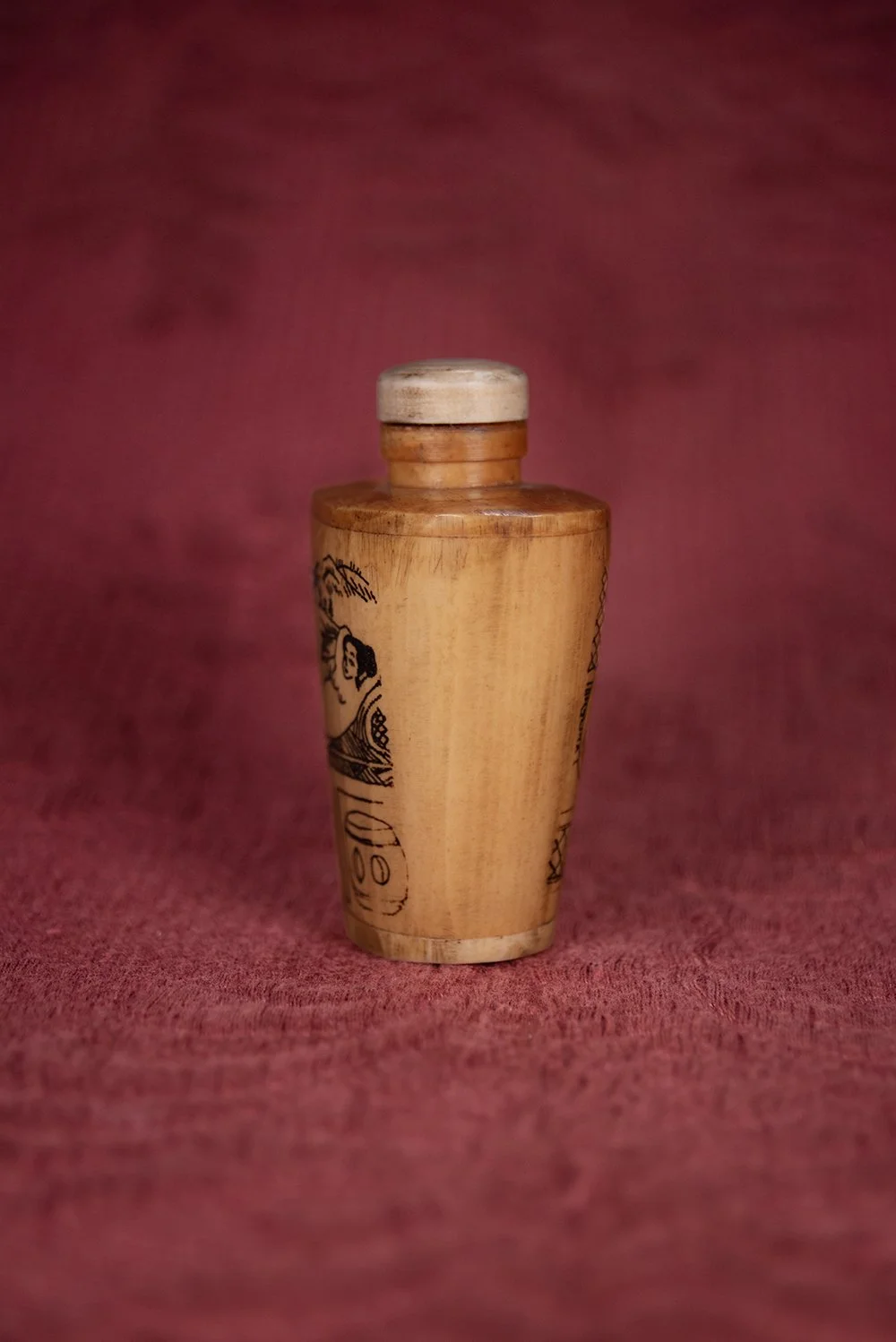 Image 1 of 4
Image 1 of 4

 Image 2 of 4
Image 2 of 4

 Image 3 of 4
Image 3 of 4

 Image 4 of 4
Image 4 of 4





Ox Bones Erotic Snuff Bottle
Snuff became popular in China during the late 16th to early 17th century, during the Qing Dynasty. Snuff, a type of smokeless tobacco made from Snuff, a finely ground smokeless tobacco believed to have medicinal properties, became popular in China during the Qing Dynasty (16th-17th century), likely introduced by Europeans. While Europeans used snuff boxes, the Chinese innovated with tightly sealed snuff bottles to preserve quality.
This 3-inch snuff bottle, purchased in Bangkok, is carved from ox bone, a y material prized for its affordability and ivory-like properties. Each side is intricately engraved with scenes of kama sutra poses, symbolizing fertility, prosperity, and life's natural harmony. In ancient Chinese culture, lovemaking was celebrated as essential to well-being, reflecting Confucian ideals.
The bottle includes a stopper with an attached spoon for convenient use.
Snuff became popular in China during the late 16th to early 17th century, during the Qing Dynasty. Snuff, a type of smokeless tobacco made from Snuff, a finely ground smokeless tobacco believed to have medicinal properties, became popular in China during the Qing Dynasty (16th-17th century), likely introduced by Europeans. While Europeans used snuff boxes, the Chinese innovated with tightly sealed snuff bottles to preserve quality.
This 3-inch snuff bottle, purchased in Bangkok, is carved from ox bone, a y material prized for its affordability and ivory-like properties. Each side is intricately engraved with scenes of kama sutra poses, symbolizing fertility, prosperity, and life's natural harmony. In ancient Chinese culture, lovemaking was celebrated as essential to well-being, reflecting Confucian ideals.
The bottle includes a stopper with an attached spoon for convenient use.



